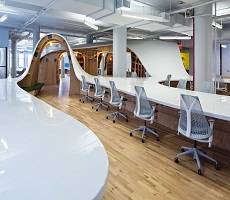March 4, 2014
By 2030 your colleagues could be old enough to be your great-grandparents
 By 2030 four-generation or “4G” workplaces – will become increasingly common as people delay retiring, even into their 80s. Although the role of women in the workplace will strengthen, an increasing divide will mean that while highly-skilled, highly-paid professionals will push for a better work-life balance, others will experience job and income insecurity. Technology will continue to evolve, pervading work environments everywhere, with many routine tasks becoming the domain of the smart algorithm. Multi media “virtual” work presences will become the norm, and as businesses seek additional flexibility, they will decrease the size of their core workforces, instead relying on networks of project-based workers. This is all according to the Future of Work, published this week by the UK Commission for Employment and Skills (UKCES). (more…)
By 2030 four-generation or “4G” workplaces – will become increasingly common as people delay retiring, even into their 80s. Although the role of women in the workplace will strengthen, an increasing divide will mean that while highly-skilled, highly-paid professionals will push for a better work-life balance, others will experience job and income insecurity. Technology will continue to evolve, pervading work environments everywhere, with many routine tasks becoming the domain of the smart algorithm. Multi media “virtual” work presences will become the norm, and as businesses seek additional flexibility, they will decrease the size of their core workforces, instead relying on networks of project-based workers. This is all according to the Future of Work, published this week by the UK Commission for Employment and Skills (UKCES). (more…)






















February 25, 2014
Musculoskeletal disorders rate highlights scale of ergonomic challenge
by Sara Bean • Comment, Facilities management, News, Workplace
More working days were lost last year to back, neck and muscle pain than any other cause. The latest figures from the Office of National Statistics (ONS) show that although there has been an overall downward trend in sickness absence in the UK over the last two decades; with 131 million days lost in 2013, down from 178 million days in 1993, at 30.6 million days lost, the greatest number of staff sick days in 2013 were due to musculoskeletal problems. Regulations and guidance relating to ergonomics in the workplace (the Health and Safety (Display Screen Equipment) Regulations 1992), were published over 20 years ago; and despite being amended in 2002, that’s still aeons in technology terms. The typical modern worker now routinely uses tablets, mobiles and other digital devices; whether at work, on the move or at home.
(more…)